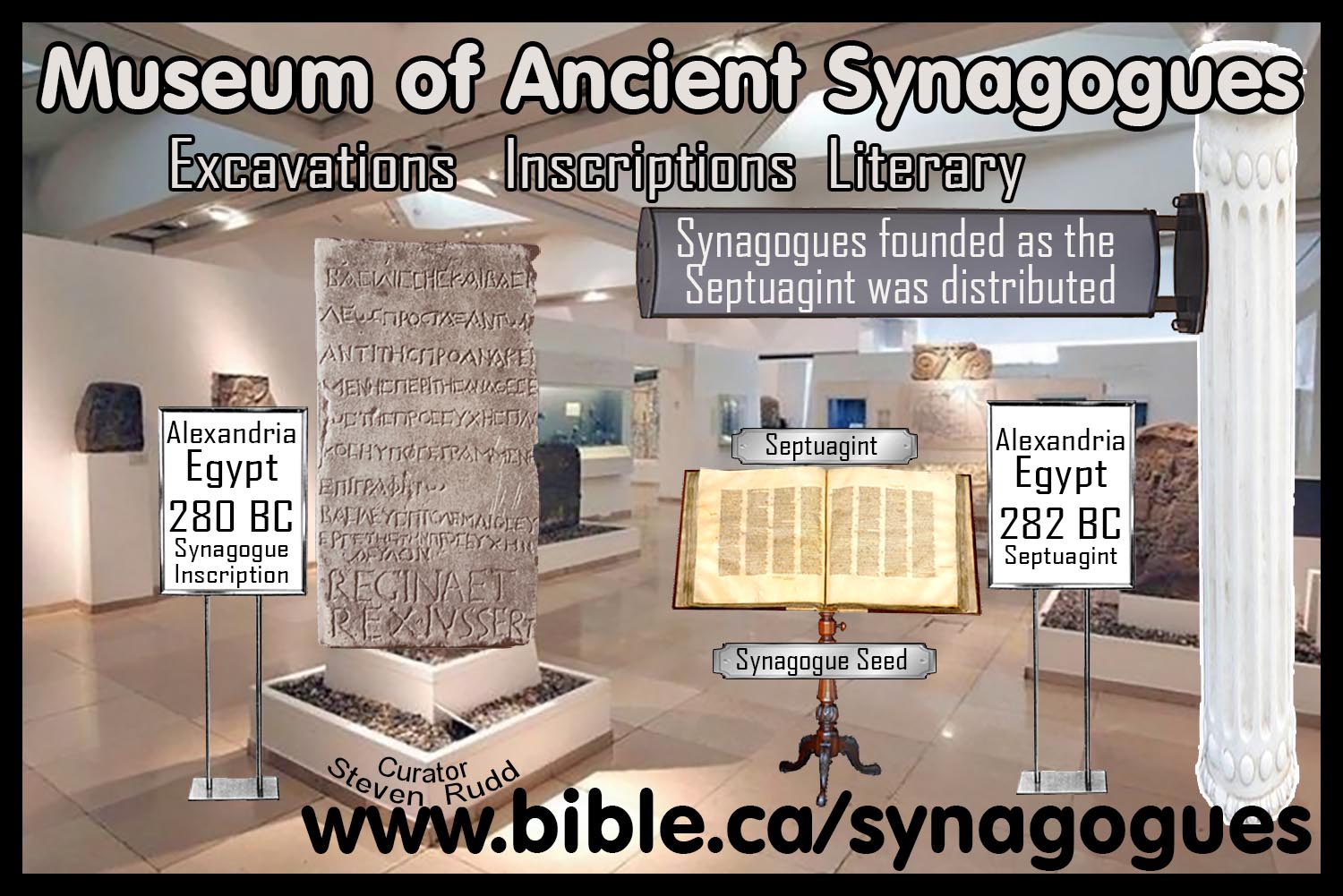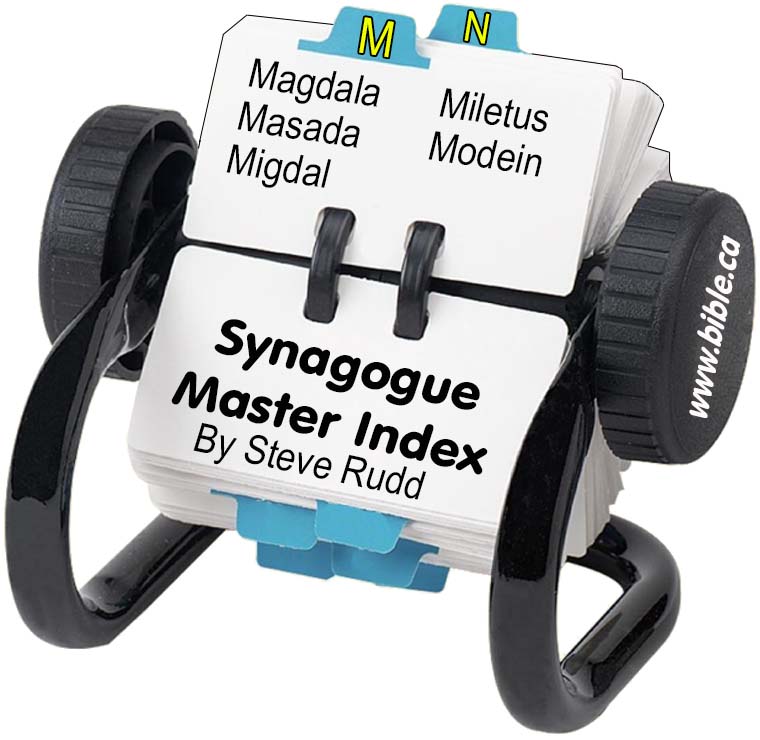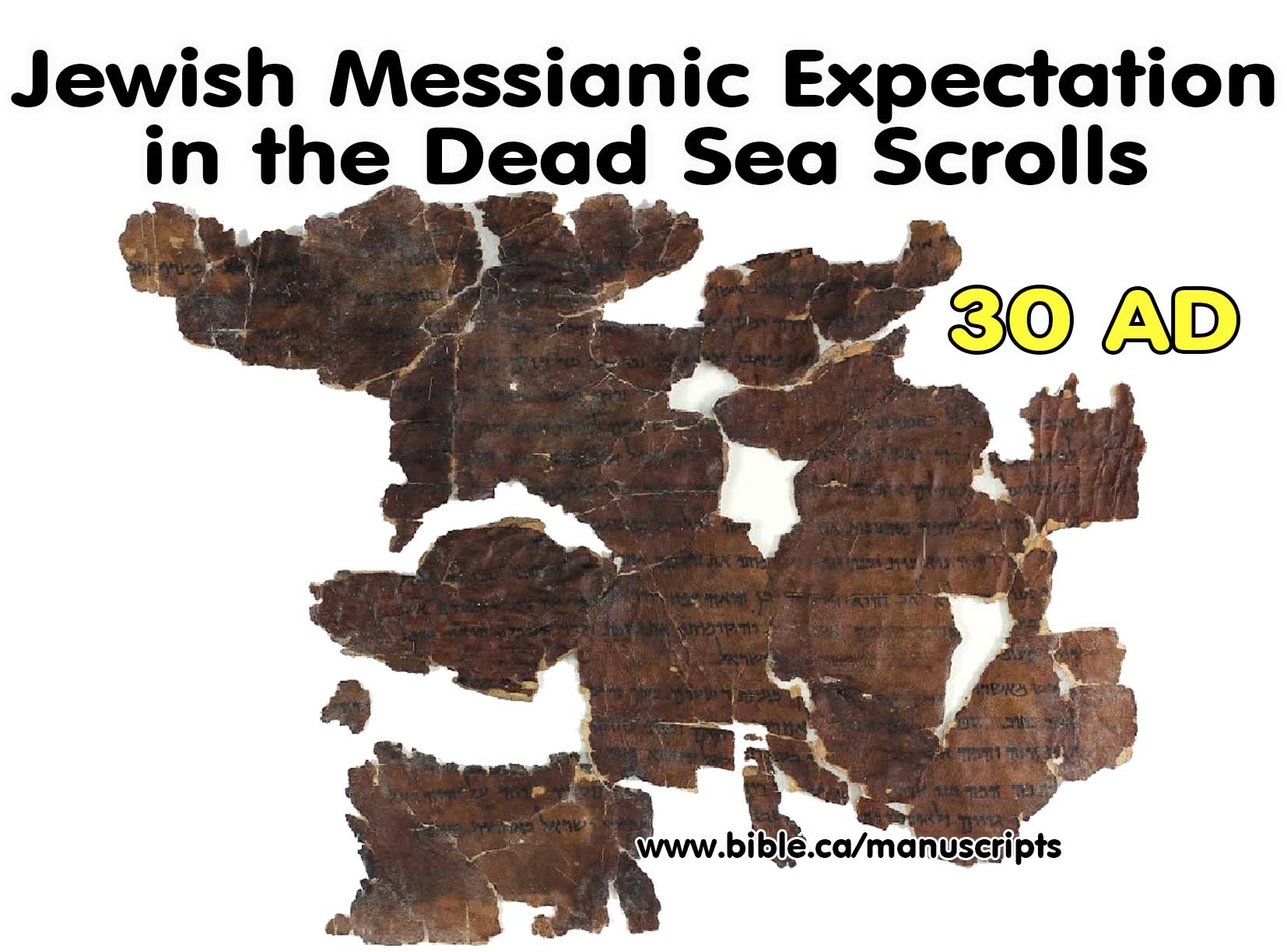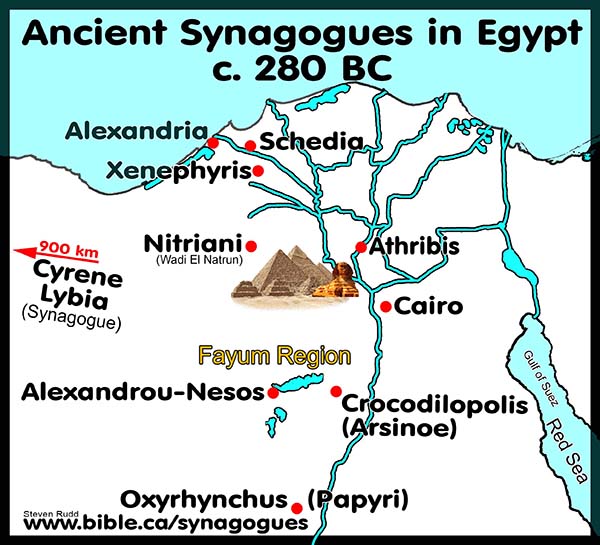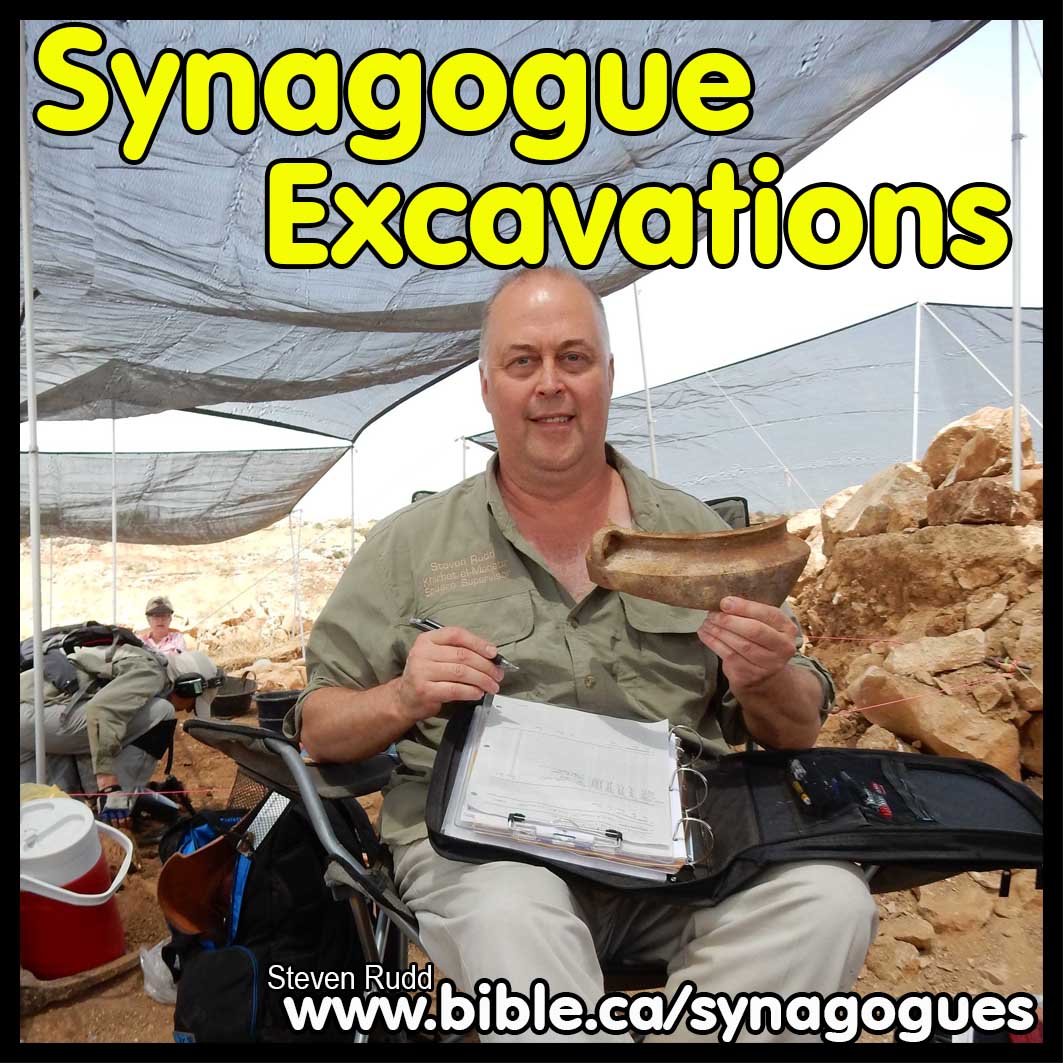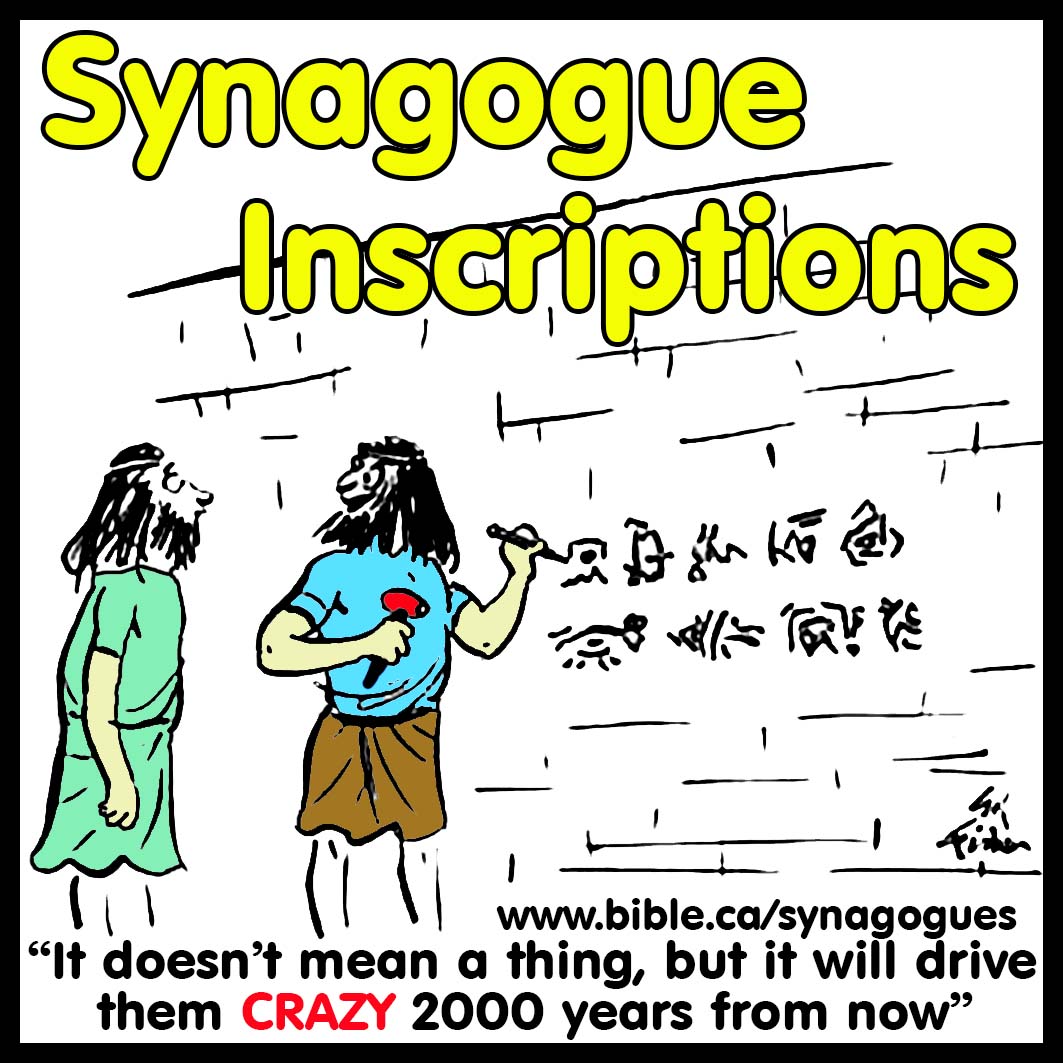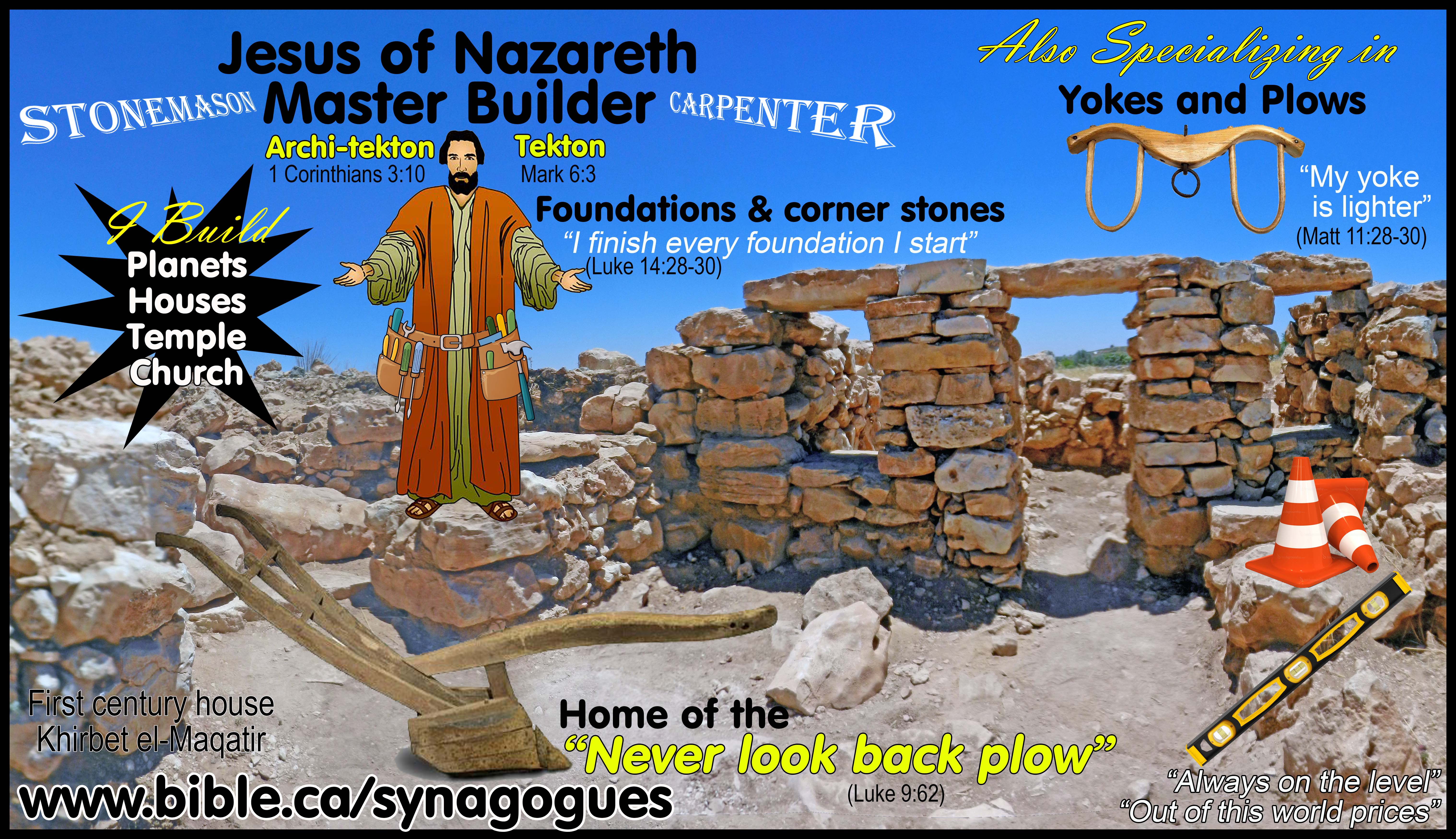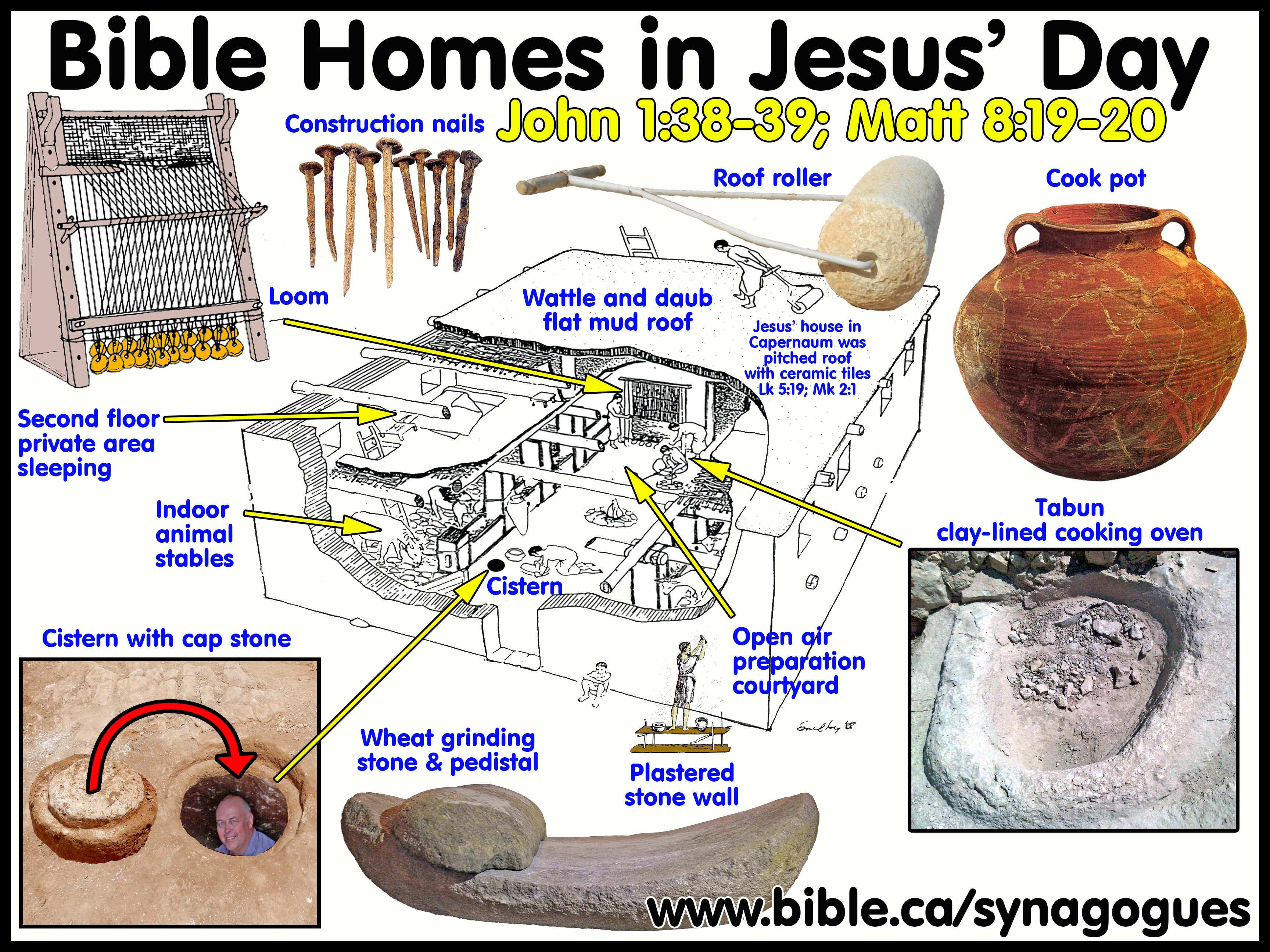Ancient Synagogue Papyrus Inscription from Crocodilopolis, Egypt: 113 AD
Synagogue Inscriptions from the Oldest Synagogues in the world
|
Crocodilopolis, Egypt: 113 AD |
A. Synagogue Inscription:
1. Inscription text:
a. (Col. I) “To Demetrios, former gymnasiarchos, auditor, from Crispus, also called Sarapion, Mysthas, also called Ptolemaios, son of Ptolemaios, Mysthas through his father Didymos, and Sotas son of Zoilos, the four administrators of the water-supply of reservoirs and fountains of the metropolis. Account of receipts and expenditures on the water-supply from Pachon of the past 16th year of the Emperor and Lord Trajan Caesar till Phaophi 30 of the current 17th year.”
b. (Col. II) “For supplying water to the bath of Severianus 18 obols daily ; Pachon, Payni, and Epeiph 72 dr. 18 ob. per month ; Mesore 1-15 (36 dr. 9 ob.) ; Mesore 16-3o no bathing (14 dr. 5 ob.) instead of 36 dr. 9 ob. or total for Mesore of 52 dr. For five intercalary days 12 dr. 3 ob. ; 17th year 72 dr. 18 ob. for Thoth and Phaophi. Total 424 dr. 93 ob. For supplying water to the street fountain 9 ob. daily : Pachon and Payni 36 dr. 9 ob. each ; for 27 days in Epeiph 33 dr. 4 ob. ; Mesore 36 dr. 9 ob. ; and”
c. (Col. III) “for five intercalary days 45 ob. Total 141 dr. 76 ob. For supplying water to the Macedonians' fountain 9 ob. daily: Pachon, Payni, Epeiph, and Mesore 36 dr. 9 ob. each month; for 5 intercalary days 45 ob. Total 152 dr. 14 ob. For supplying the fountain of Kleopatrios 9 ob. daily : Pachon, Payni, and Epeiph 36 dr. 9 ob. monthly ; Mesore 20 dr. and the additional sum paid by the bath of Severianus in the same month 14 dr. 5 ob. ; for 4 intercalary days 5 dr. ; 17th year 29 days in Thoth, because water was not supplied one day, 36 dr. ; Phaophi 36 dr. 9 ob. Total 205 dr. 36 ob. For supplying water to the brewery at the Sarapeion 13 ob. daily Pachon, Payni, and Epeiph 52 dr. 13 ob. monthly Mesore 52 dr. 5 ob. ; because a rebate of 8 ob. was made for the day when the brewer provided water for himself ; for 5 intercalary days 9 dr. ; 17th year Thoth 52 dr. 13 ob. ; Phaophi (25 days) 44 dr. because water was not supplied on the remaining days. Total 313 dr. 70 ob. From the rulers [archontes] of the synagogue [proseuche] of the Thebian Jews, 128 drachmae monthly: Pachon, 128 drachmae; Payni, 128 drachmae; Epeiph, 128 drachmae; Mesore, 128 drachmae; 17th year, Thoth,128 drachmae; Phaophi, 128 drachmae. Total: 768 drachmae. From the prayer hall [eucheion] similarly, 128 drachmae monthly: Pachon, 128 drachmae; Payni 128 drachmae; Epeiph 128, drachmae; Mesore 128, drachmae; 17th year, Thoth, 128 drachmae; Phaophi, 128 drachmae. Total: 768 drachmae.
2. Epigraphic Evidence: Greek Synagogue text on papyrus
3. Provenance: Arsinoe Crocodilopolis, Egypt, 1893 AD
4. Current location: British Museum.
5. Synagogue Occupation Date (SOD) = Excavation date + Inscriptional date + Literary date = 240 BC
a. SOD computation system details
b. Excavation date: none
c. Inscriptional date: Crocodilopolis 240 BC
d. Literary date: 113 AD and Crocodilopolis 113 BC
6. Contemporary Rulers: Caesar Trajan (98-117 AD)
7. References:
a. CPJ: Corpus Papyrorum Judaicarum, Tcherikover, vol 2, no. 2.432, p220, 1960 AD
8. Related Literary references:
a. Acts 16:13
b. Philo, Embassy 132-134
c. Josephus, Life 277
9. Further documentation and comments:
a. The water tax documents the common practice of ritual purity through washings and the two mikvaot (one mikveh at each synagogue).
b. One of the two synagogues referenced in this papyrus inscription is probably the same synagogue inscription of 240 BC and the papyrus inscription of 113 BC.
c. Synagogue papyrus about Crocodilopolis 113 BC
d. Synagogue inscription at Crocodilopolis 240 BC
B. Inscription footnotes:
1. 16th year of Caesar Trajan is 113 AD.
2. Note that these two synagogues are taxed at TWICE the rate (128 drachmae monthly) of a nearby BATHHOUSE (18 obols daily)
a. A bathhouse uses a lot of water: “supplying water to the bath of Severianus 18 obols daily”
b. This proves that there was an on site mikveh and they used a lot of water for ritual cleansing purposes.
3. Synagogue rulers are called, “archontes”.
4. One synagogue is called a “proseuche” (house of prayer) and the other is called a “eucheion”.
By Steve Rudd 2017: Contact the author for comments, input or corrections
|
Jesus your messiah is waiting for you to come home! |
|
|
Why not worship with a first century New Testament church near you, that has the same look and feel as the Jewish Synagogue in your own home town. As a Jew, you will find the transition as easy today as it was for the tens of thousands of your forefathers living in Jerusalem 2000 years ago when they believed in Jesus the Nazarene (the branch) as their messiah. It’s time to come home! |
|
By Steve Rudd: Contact the author for comments, input or corrections.
Go to: Main Ancient Synagogue Start Page

